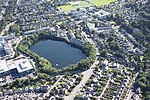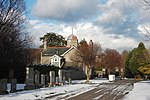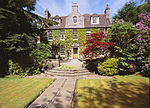Roman Catholic Diocese of Aberdeen
Christianity in AberdeenReligious organisations based in ScotlandReligious organizations established in 1878Roman Catholic Ecclesiastical Province of St Andrews and EdinburghRoman Catholic dioceses and prelatures established in the 19th century ... and 2 more
Roman Catholic dioceses in ScotlandUse British English from August 2017

The Roman Catholic Diocese of Aberdeen (Latin: Dioecesis Aberdonensis) is a diocese of the Latin Church of the Roman Catholic Church in Scotland.
Excerpt from the Wikipedia article Roman Catholic Diocese of Aberdeen (License: CC BY-SA 3.0, Authors, Images).Roman Catholic Diocese of Aberdeen
Kepplestone Gardens, Aberdeen City Seafield
Geographical coordinates (GPS) Address Nearby Places Show on map
Geographical coordinates (GPS)
| Latitude | Longitude |
|---|---|
| N 57.138 ° | E -2.143 ° |
Address
Kepplestone Gardens 18
AB15 4DH Aberdeen City, Seafield
Scotland, United Kingdom
Open on Google Maps








